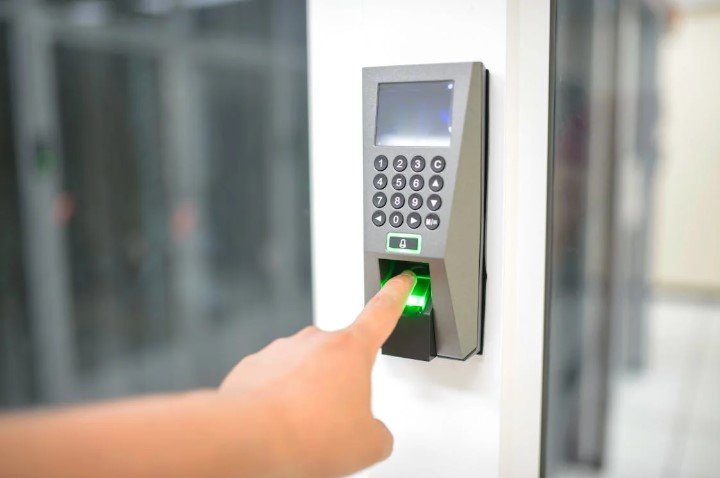Advanced Biometric Security Systems for Access Control: Benefits & Types
In an era marked by rising security threats and a shift toward more streamlined and efficient operations, traditional methods of access control, such as passwords, PINs, and physical keys, are increasingly becoming obsolete. Organizations, businesses, and government entities are turning to more advanced and secure alternatives to protect their sensitive environments. One of the most innovative and reliable solutions emerging is biometric security systems. These systems use unique physiological or behavioral traits to identify and authenticate individuals, ensuring higher security levels that are difficult to bypass. This article explores the importance, types, advantages, and challenges of advanced biometric security systems for access control.
What are Biometric Security Systems?
Biometric security systems utilize the unique biological characteristics of individuals to grant access or perform authentication. Unlike traditional systems that rely on knowledge-based credentials (e.g., passwords or PINs) or possession-based credentials (e.g., key cards), biometrics relies on something inherently unique to the individual, such as fingerprints, facial features, or the patterns in the iris. The idea behind these systems is simple: If an individual’s biometric data matches a pre-recorded template stored in a secure database, access is granted.
These biometric traits are typically categorized into two primary groups:
- Physiological Biometrics – These include characteristics like fingerprints, face recognition, iris patterns, retina scans, hand geometry, and DNA.
- Behavioral Biometrics – These include characteristics related to behavior, such as voice recognition, gait, and even typing speed or rhythm.
These systems represent a leap forward in terms of security, replacing vulnerable methods that can be stolen, lost, or forgotten.
Types of Advanced Biometric Security Systems
The field of biometric security is wide-ranging, with a variety of systems each suited for different applications. Below are some of the most advanced biometric authentication systems currently available.
1. Fingerprint Recognition
Fingerprint recognition remains one of the most widely used forms of biometric security. It works by scanning the unique ridge patterns found in an individual’s fingerprint, converting these ridges into digital data that can be compared with stored templates. While fingerprint systems are relatively easy to implement and cost-effective, the technology has advanced significantly in recent years. Modern fingerprint sensors now come with advanced liveness detection, preventing fake fingerprints made from materials like silicone or gelatin.
Fingerprint systems are commonly used in both personal devices (like smartphones) and enterprise environments, providing an excellent balance between security and convenience.
2. Facial Recognition
Facial recognition technology analyzes the unique features of a person’s face, such as the distance between the eyes, nose shape, and jawline. In the past, this method had accuracy limitations, especially in poor lighting or when the person altered their appearance (e.g., wearing glasses or a hat). However, with the advent of AI and machine learning, modern facial recognition systems are now highly reliable, capable of identifying individuals with greater precision and in real-time.
Facial recognition has the advantage of being touchless, making it an appealing solution for environments where hygiene and convenience are critical. It is widely used for airport security, building access, and mobile phone authentication. It can also be integrated with surveillance systems to monitor entrances and exits for unauthorized access.
3. Iris Recognition
Iris recognition is one of the most accurate and sophisticated biometric systems. It works by scanning the intricate patterns in the colored part of the eye, which are unique to each individual and remain stable throughout life. Iris recognition is highly secure due to the difficulty of replicating or spoofing the patterns, making it an ideal choice for high-security areas such as government buildings, military installations, and secure financial environments.
While iris scanners offer a high level of security, they are typically more expensive and less commonly used due to the complexity of the technology and the need for specialized equipment.
4. Retina Scanning
Retina scanning involves analyzing the pattern of blood vessels at the back of the eye. This biometric method is also highly accurate and difficult to duplicate. Retina scanning has been considered one of the most secure biometric systems available. However, it requires users to position their eyes precisely in front of the scanner, which can make the process more invasive compared to other biometric methods.
Like iris scanning, retina scanning is typically used in environments that require the highest levels of security.
5. Voice Recognition
Voice recognition systems analyze an individual’s speech patterns, including pitch, tone, and rhythm, to verify their identity. This system can be used in remote access control, such as for call centers or phone-based authentication. One of the primary benefits of voice recognition is that it is less intrusive than other biometric methods, requiring only the individual to speak a short phrase.
However, voice recognition can be affected by external factors such as background noise, the person’s health condition (e.g., a cold), or changes in emotional state. These limitations must be addressed for the system to maintain high levels of accuracy.
6. Gait Recognition
Gait recognition analyzes the unique way in which individuals walk. This relatively new form of biometric security is considered promising, especially in environments where individuals may not be in close proximity to a scanner or camera. Gait recognition can identify people from a distance and can be used for non-intrusive surveillance or security. While this technology is still in its development stages, its potential for large-scale applications, such as in airports or crowded public spaces, is exciting.
Advantages of Biometric Security Systems
Biometric systems offer numerous advantages over traditional methods of access control. Some of the key benefits include:
1. Enhanced Security
Biometric systems provide a higher level of security than conventional systems like passwords or PINs. With passwords, individuals can easily forget or share them, leading to potential breaches. Keys and access cards can be lost, stolen, or replicated. Biometrics, on the other hand, are unique to each person and cannot be easily transferred, duplicated, or forgotten.
2. Convenience and Speed
Biometric authentication is often faster and more convenient than traditional methods. Users do not need to remember complex passwords or carry physical keys. In some cases, such as facial recognition, access can be granted with minimal user interaction, making it ideal for busy environments where quick, secure access is essential.
3. Reduced Fraud and Identity Theft
Because biometric traits are difficult to replicate, biometric security significantly reduces the likelihood of fraud and identity theft. An attacker would need to steal or replicate a physical characteristic (such as a fingerprint or iris) to impersonate someone else, which is far more difficult than stealing a password or key card.
4. Audit Trail and Accountability
Biometric systems can generate detailed logs and reports about who accessed what and when. This creates an audit trail that can be invaluable for security investigations or compliance with regulations. It also holds individuals accountable for their actions, as biometric data directly links them to their access attempts.
5. Non-transferable
Unlike passwords or access cards, biometric traits are inherently personal and non-transferable. This reduces the chances of unauthorized access, as it is impossible for someone to use a stolen or shared biometric identifier.
Challenges of Biometric Security Systems
Despite their advantages, biometric systems are not without challenges. Some of the common issues include:
1. Privacy Concerns
Biometric data is highly sensitive, and storing such data raises significant privacy concerns. Improper storage or unauthorized access to biometric information could lead to identity theft or misuse. Stricter regulations and advanced encryption methods are essential to mitigate these risks.
2. Cost and Implementation
Advanced biometric systems can be expensive to implement, especially for small and medium-sized businesses. The cost of high-quality scanners, software, and infrastructure, along with ongoing maintenance, can be a barrier to adoption. Additionally, organizations must train employees to use the systems properly.
3. False Positives and False Negatives
While biometric systems are generally accurate, they are not flawless. False positives (wrongly granting access to an unauthorized individual) and false negatives (denying access to an authorized individual) can occur, particularly in systems that are not properly calibrated or in environments with challenging conditions.
4. Environmental Sensitivity
Biometric systems can be affected by external factors such as lighting, humidity, or the physical condition of the user. For instance, fingerprint scanners might struggle with wet or dirty hands, and facial recognition may have trouble identifying someone wearing a mask or glasses. These challenges can impact the effectiveness of the system in certain environments.
The Future of Biometric Security Systems
The future of biometric security looks promising, with continuous advancements in AI, machine learning, and sensor technologies improving accuracy, efficiency, and accessibility. Multi-modal biometric systems, which combine two or more biometric methods (e.g., fingerprint and facial recognition), are also gaining traction as a way to enhance security further. As the technology matures, biometric systems are expected to become more affordable, reliable, and widely adopted, offering a seamless and highly secure solution for access control across various industries.
Advanced biometric security systems are revolutionizing access control by offering unparalleled accuracy, convenience, and protection against unauthorized access. While there are challenges related to privacy, cost, and environmental factors, the benefits far outweigh these drawbacks, especially as technology continues to evolve. As biometric systems become increasingly affordable and sophisticated, it is likely that they will replace traditional access control methods in many sectors, creating a safer and more efficient world.
FAQs About Advanced Biometric Security Systems for Access Control
1. What are biometric security systems? Biometric security systems use unique physiological or behavioral characteristics, such as fingerprints, facial features, or iris patterns, to authenticate and verify an individual’s identity. These systems provide enhanced security compared to traditional methods like passwords or access cards.
2. What are the different types of biometric authentication? Common types of biometric authentication include fingerprint recognition, facial recognition, iris scanning, retina scanning, voice recognition, and gait recognition. Each type uses a distinct biological or behavioral trait to authenticate individuals.
3. How secure are biometric security systems? Biometric security systems are considered highly secure because they use unique, hard-to-replicate traits, making it nearly impossible for unauthorized individuals to gain access. However, no system is completely foolproof, and there are still potential risks related to privacy and environmental conditions.
4. What are the benefits of using biometric systems for access control? Biometric systems offer several benefits, including increased security, convenience, reduced fraud, and faster access. They are non-transferable, provide an audit trail, and eliminate the need for passwords or physical keys, making them an ideal solution for sensitive environments.
5. Are there any challenges associated with biometric security systems? Yes, there are challenges, including concerns about privacy and data security, the high cost of implementation, and potential issues with accuracy (false positives/negatives). Environmental factors, such as lighting and the condition of biometric traits, can also affect system performance.













Post Comment